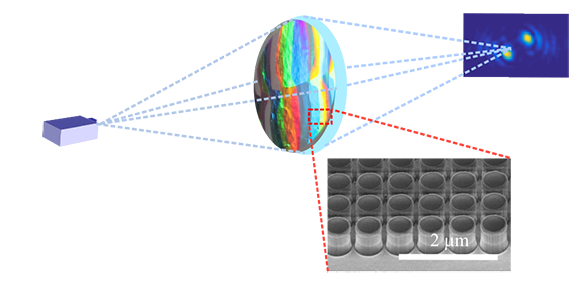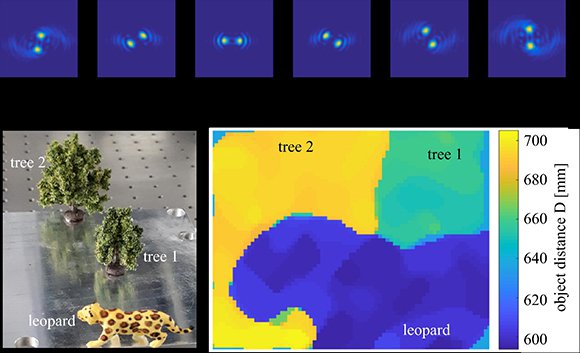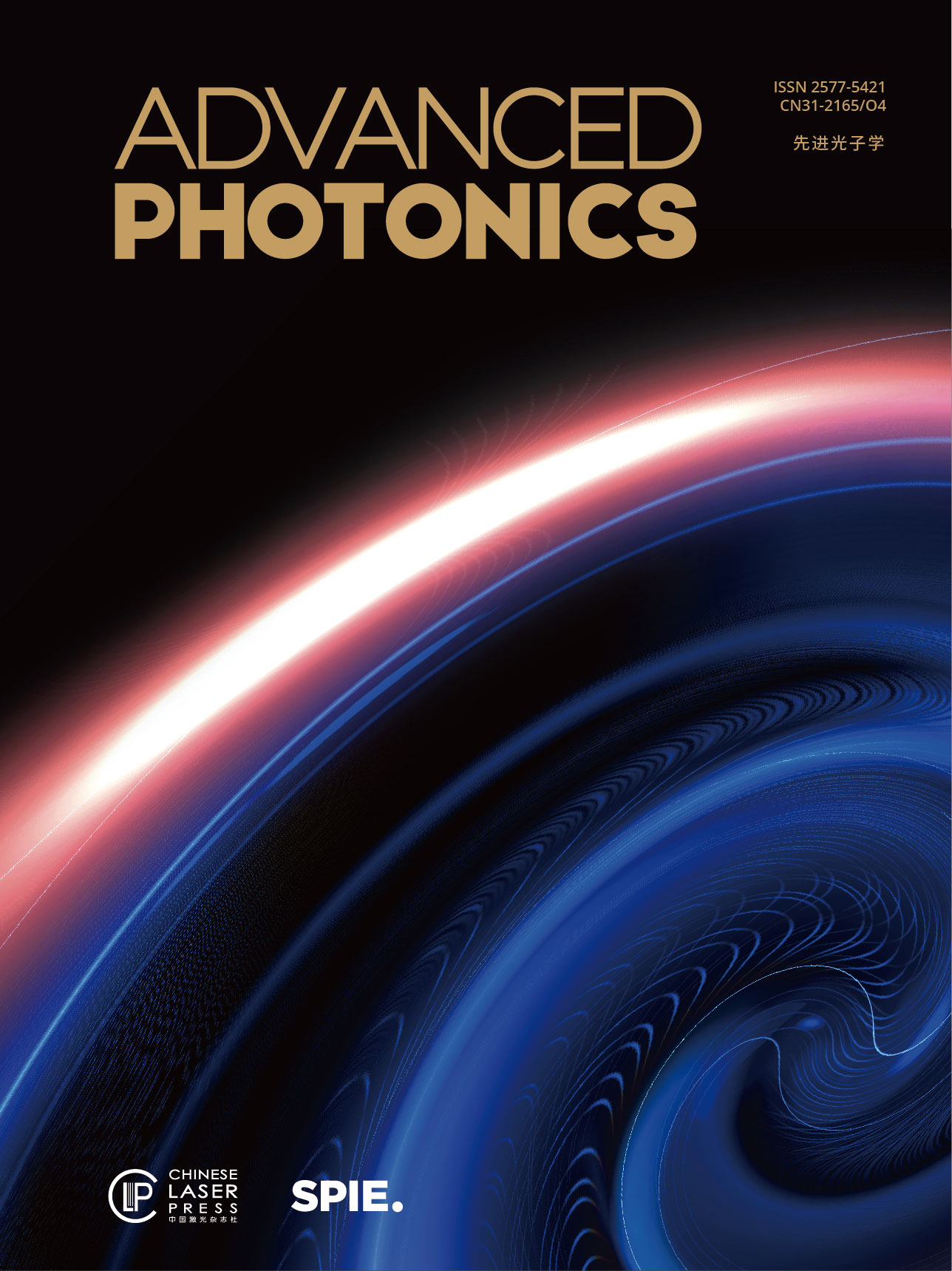
Original article published in Advanced Photonics, https://doi.org/10.1117/1.AP.1.3.036001
Optical metasurfaces made from all-dielectric building blocks have been established as a versatile way to implement various optical functionalities, including lenses, holograms, and vortex-beam generators. In a recent breakthrough, researchers demonstrated a metasurface enabling three-dimensional imaging with only a single camera.
Their approach is based on 3D imaging using an engineered point-spread function that rotates in the detection plane of the imaging system when the object distance is changed. Specifically, they use a point-spread function consisting of two intensity maxima rotating around a common center, situated at the optical axis of the imaging system. Such point-spread functions are realized by implementing an optimized phase mask that introduces a spatially varying phase shift in the transmitted beam, in the aperture plane of the imaging system.
The researchers use the so-called Huygens' metasurfaces to implement such a phase mask. Huygens' metasurfaces consist of periodically arranged resonant nanoparticles that have equal resonance strength and fundamental electric and magnetic resonances that coincide spectrally. Having a very high transmission, these metasurfaces also allow control of the transmitted light phase by slightly changing the geometry of the nanoparticles. Using metasurfaces consisting of silicon nanocylinders, the researchers realize a phase coverage from 0 to 2π of the transmitted light by changing the radius of the cylinders and the period of the periodic arrangement. The phase mask is implemented by realizing a pixelated metasurface where the structural geometry of the different pixels is chosen to achieve a specific phase shift to realize a rotating point-spread function.
Experimental characterization of the point-spread function of a simple imaging system containing the realized phase mask shows that object distances within a span of 20 cm centered at 65 cm object distance can be discriminated. This is achieved by determining the inclination of the rotating maxima with respect to the horizontal direction.

(top) Point-spread function with two maxima rotating in dependence on the object distance. (bottom left) 3D scene imaged with metasurface-based image system for 3D imaging and (bottom right) retrieved distances.
Furthermore, the authors show that 3D imaging can be realized with a single camera using the metasurface phase mask. They image a scene containing several objects within the distance range resolvable by the engineered point-spread function. The captured raw image using such point-spread function contains two copies of each image point, due to the two maxima of the point-spread function. These are shifted relative to each other depending on the distance of the respective object point. Using a numerical reconstruction algorithm that locally analyzes the image cepstrum, the researchers were able to retrieve both the distance of each object point and a 2D intensity map.
Thus, they show that 3D imaging using metasurfaces is possible, which is a significant step toward incorporating increasingly complex functionalities into ultrathin nanostructured surfaces.
Read the original research article in the open-access journal Advanced Photonics. Chunqi Jin et al., "Dielectric metasurfaces for distance measurements and 3D imaging," Adv. Photonics 1(3) 036001 (2019).
For more context and discussion of this exciting research, see the commentary by Lei Xu and Mohsen Rahmani.


